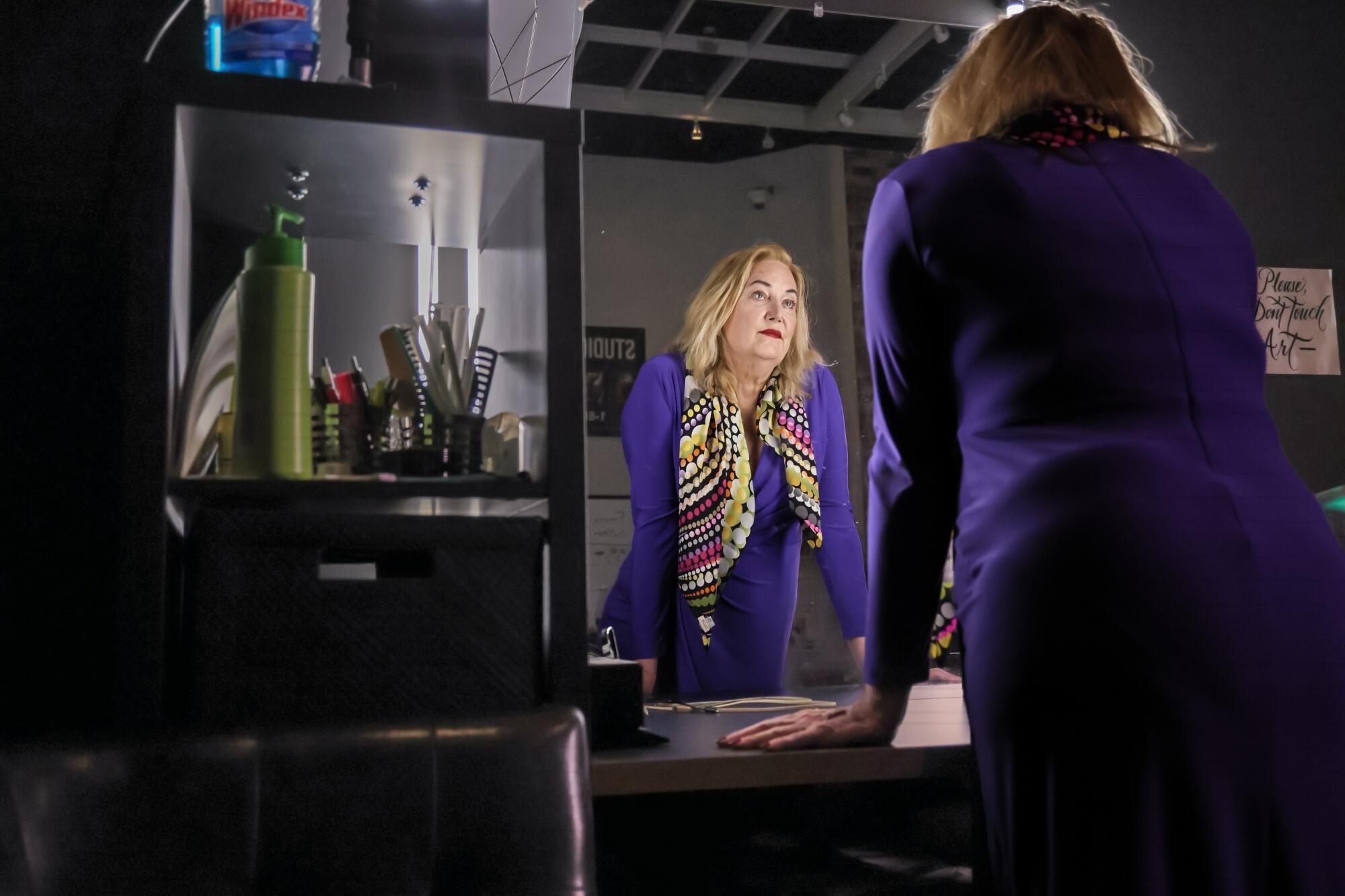
- Share via
BERKELEY — Day after day, emails pour into Erica Anderson’s inbox from parents struggling to support their teenagers coming out as transgender.
“He’s been depressed and anxious since the pandemic began, and over the past few days he has shared with me that he’s pretty sure he’s trans,” said one message about a 17-year-old.
“I am very worried that my child is being pressured into wanting to take [puberty] blockers, ‘because that is the next step,’ ” said another. “We are supportive and have helped them to socially transition, but the medical part somehow for her at 13 does not seem right.”
“How do we decide whether an adolescent in the throes of so much turmoil can make such a medically consequential, irreversible decision?” another said about a 15-year-old’s pleas for testosterone injections.
The parents come to Anderson, 71, in part because she herself is transgender. Anderson also stands out because she is one of the few clinical psychologists specializing in transgender youth to publicly question the sharp rise in adolescents coming out as trans or nonbinary.
She has helped hundreds of teens transition. But she has also come to believe that some children identifying as trans are falling under the influence of their peers and social media and that some clinicians are failing to subject minors to rigorous mental health evaluations before recommending hormones or surgeries.

“I think it’s gone too far,” said Anderson, who until recently led the U.S. professional society at the forefront of transgender care. “For a while, we were all happy that society was becoming more accepting and more families than ever were embracing children that were gender variant. Now it’s got to the point where there are kids presenting at clinics whose parents say, ‘This just doesn’t make sense.’ ”
Her skepticism — and her willingness to speak directly to the public — puts her at the center of America’s culture war over trans kids.
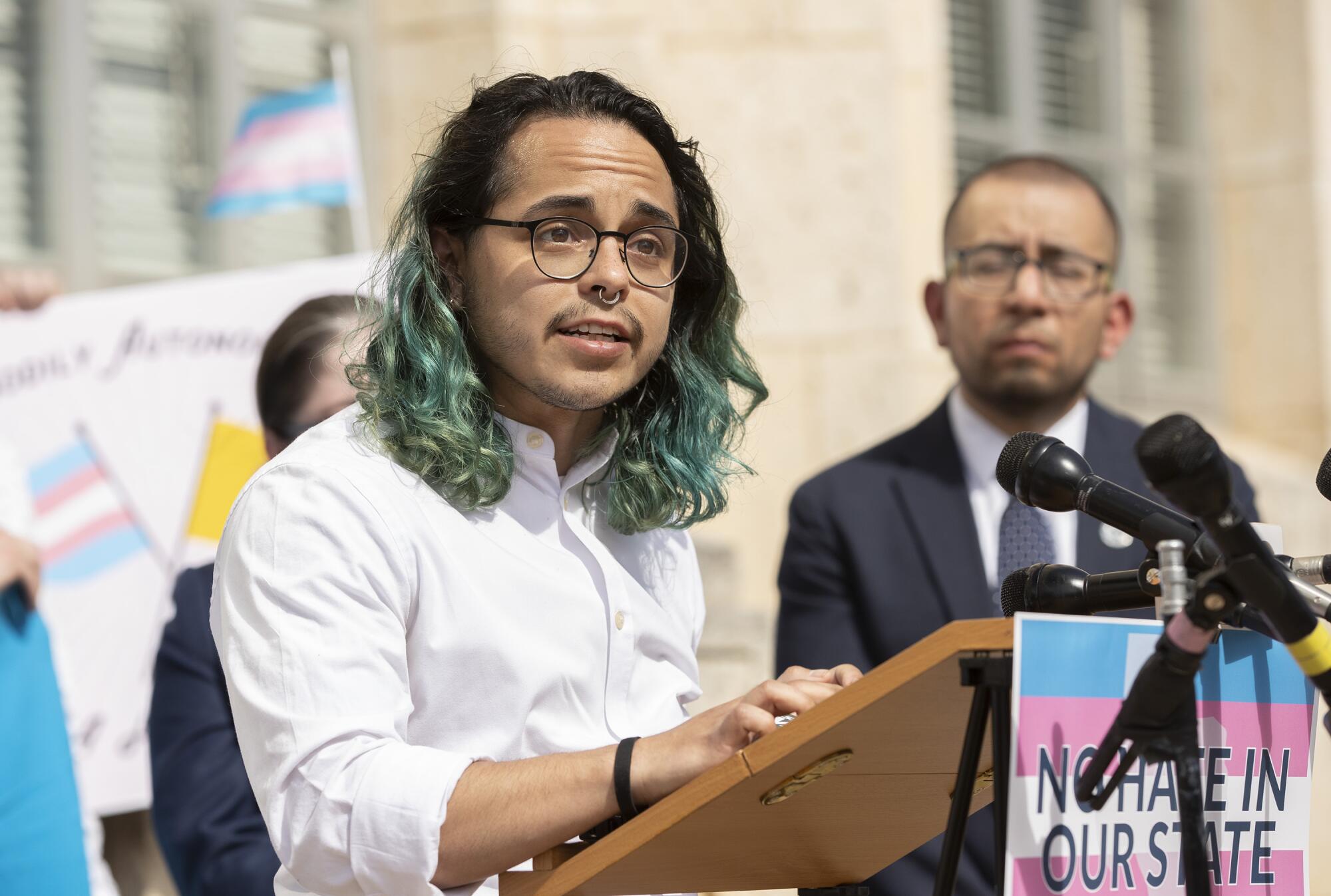
Legislation to ban gender-affirming medical interventions for anybody under 18 has been passed or introduced in more than a dozen conservative states. In February, Texas Gov. Greg Abbott, who has described gender surgeries as “child abuse,” instructed state officials to prosecute parents who allow their kids to medically transition — a directive that Anderson condemned as “horrifying.”
On the other side, trans activists want to tear down barriers to transitioning, with some accusing Anderson of having abandoned them.
“From the very beginning of the history of psychology, cisgendered, heterosexual psychologists made this grand notion that trans and queer people were crazy and couldn’t make decisions for themselves,” said D. Ojeda, senior national organizer at the National Center for Transgender Equality in Washington.
Anderson sees herself in the middle.
“The people on the right … and on the left don’t see themselves as extreme,” she said. “But those of us who see all the nuance can see that this is a false binary: Let it all happen without a method or don’t let any pass. Both are wrong.”
::
Anderson’s own gender journey was painstakingly slow.
Born in 1951, she grew up in the conservative Minnesota town of Edina, the first of three children of an advertising executive and a schoolteacher-turned-housewife. Unlike some trans people, she has no problem sharing her birth name, Eric, or photographs from that time.
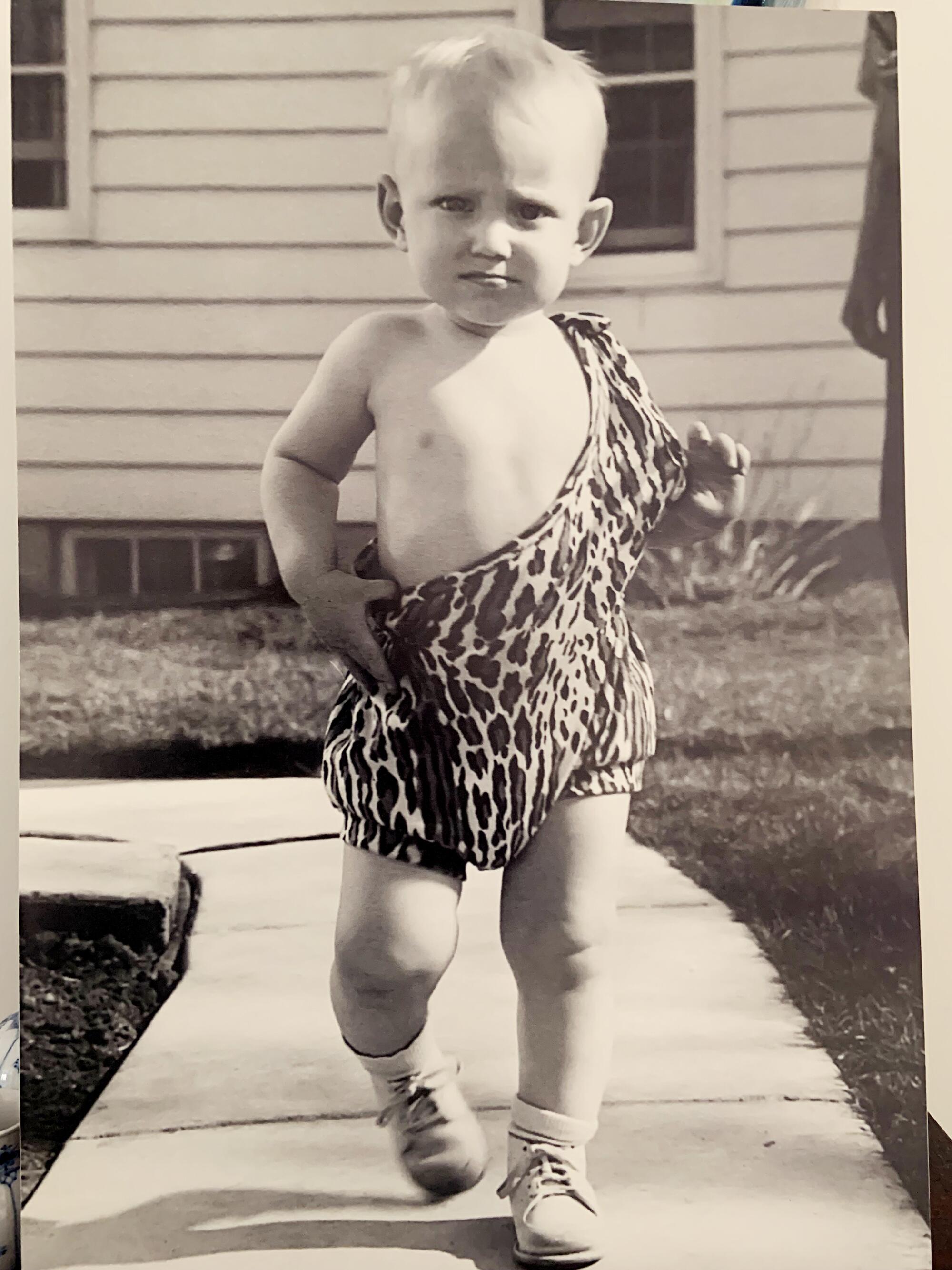
Anderson had never heard the word “transgender” when, at 12, she imagined being a woman, or at 14, sneaked into a sister’s room to try on her clothes.
An avid Boy Scout and church youth leader, Anderson was attracted to girls and fit easily into the rhythms of high school life — dating, playing on the basketball team, serving as class president. But nothing could eliminate the thoughts of being a woman — not going to university, not getting married, not becoming a father.
Even as Anderson began to understand that she was transgender, she was tormented by the idea that transitioning would destroy her family and her career as a psychologist. She also worried that at 6-foot-1 with a low voice, she would never pass as a woman.
Attitudes about transgender people were evolving in the medical community, but stigma was rife. When Anderson, at 45, finally plucked up the courage to visit an endocrinologist, the doctor shook her head and refused to prescribe hormones. Anderson walked away feeling deeply ashamed.
In the end, it took Anderson more than half a century to — in her words — “become a woman.”
At 58, she began hormone treatment to develop breasts and widen her hips. She found a doctor who had pioneered new techniques in facial feminization surgery to shave down her jaw, sculpt her nose and plump her lips. She legally changed her name, got a new job and moved to California. At 61, she had surgery to remove her penis and construct a vagina, clitoris and labia.
It was daunting to start dating as an older trans woman — Anderson’s wife made it clear she would not be with a woman and they eventually divorced. But Anderson was thrilled to navigate the world as her true self.
She embraced a public role specializing in gender, joining the field’s national and international associations of experts while devoting much of her private practice to working with teens with gender issues.
Often, that meant writing letters of support to get them puberty blockers or hormones.
“You don’t quite realize this yet,” she sometimes joked when she was getting to know a new patient. “But I am your new best friend.”
::
The first U.S. gender clinic dedicated to youth opened in Massachusetts in 2007. Today there are more than 60.
In 2017, federal health researchers surveyed high school students in 19 school districts and found that 1.8% identified as transgender — 2½ times the best estimate made five years earlier.
Clearly, the decline in social stigma has allowed more teens to come out.
Anderson, though, began to wonder whether that was the full story. About 2016, when she began working with the Child and Adolescent Gender Center at UC San Francisco Benioff Children’s Hospital, she noticed a growing group of transgender youth: adolescents who had not appeared to question their gender much, or at all, before puberty.
Some drifted from one identity to the other: gender-questioning, trans, nonbinary, gay. And many of their cases were complicated by anxiety, depression, autism, bipolar disorder or other mental health conditions that predated their desire to transition.
“A fair number of kids are getting into it because it’s trendy,” she told the Washington Post in 2018. “I think in our haste to be supportive, we’re missing that element.”
At the same time, she was careful not to overstate her point.
“I can assure you, transgender identity is not something one catches,” she said in an interview the following year after being elected the first transgender president of the U.S. arm of the World Professional Assn. for Transgender Health, or WPATH.
As millions of teenagers across the U.S. went into quarantine in 2020, Anderson found herself meeting more and more parents who were startled when their children came out as trans. The UC San Francisco adolescent gender center where she worked saw a total of 373 new patients last year — up from 162 in 2019.
The teens tended to tell similar stories: They were in online school, had a lot of time on their hands and were spending more time on social media. TikTok, Instagram and YouTube, and even video games, allowed teens to craft virtual identities that they could then try out in the real world.
Online, a stream of transgender influencers and activists told teens that if they felt uncomfortable with their bodies, or didn’t fit in, maybe they were trans. Some coached kids on how to bind their breasts, how to change their name and pronouns at school, how to push their parents for testosterone.
“To flatly say there couldn’t be any social influence in formation of gender identity flies in the face of reality,” Anderson said. “Teenagers influence each other.”
In four decades as a psychologist, Anderson had witnessed waves of adolescents develop eating disorders and repressed memory syndrome. Research suggests that peer influence and social trends played a key role. Was gender identity really the only sphere of adolescent development immune from social influence?
“What happens when the perfect storm — of social isolation, exponentially increased consumption of social media, the popularity of alternative identities — affects the actual development of individual kids?” Anderson said. “We’re sailing in uncharted seas.”
::
In early 2021, Anderson logged into a Zoom meeting with a team of experts at UC San Francisco to meet a new patient and his family.
He was 13, and about two months earlier he had started identifying as male. According to his parents, it wasn’t until puberty that he had shown any sign of distress over gender.
A pediatrician had already put him on testosterone, even though he had not met with a psychologist.
“Why is this kid on testosterone so precipitously?” Anderson asked her colleagues.
It did not take long for the team to agree to discontinue the hormone and offer a referral to a gender specialist.
Numerous studies show that transgender teens are more likely than their peers to experience depression and anxiety and that gender-affirming care can help relieve those problems.
But questions remain about how to weigh the benefits of medical interventions against the risks, which include sterility, decreased bone density and other potentially permanent side effects.
Most studies demonstrating the benefits focus on teens who went through extensive mental health evaluations or adults who currently identify as transgender. Neither group may be representative of teens seeking care today — much like the universe of people who apply to college differs from the universe of those who graduate.
Nobody comprehensively tracks how often adolescents in the U.S. receive gender-affirming medical interventions, and what few statistics exist on how often those who transition go on to regret the decision are highly contested.
Most experts agree that teens should get an evaluation before receiving medical interventions. The debate within the field is over how rigorous it should be and whether mental health professionals should be involved.
In December, WPATH proposed new standards of care for transgender youth: minimum ages of 14 for hormone therapy, 15 for chest masculinization and 17 for genital surgeries — and only after comprehensive assessments showing patients meet the “diagnostic criteria of gender incongruence” and demonstrate “persistent” gender incongruence or nonconformity for “several years.”
Unlike Anderson, some healthcare providers see the proposal as a setback because they say it adds roadblocks compared with the current guidelines, which are more than a decade old.
They suggest that teenagers can be trusted just as much as adults when it comes to knowing their gender identity, and point out that the latest proposed guidelines for adults eliminate any requirement for mental health assessments.
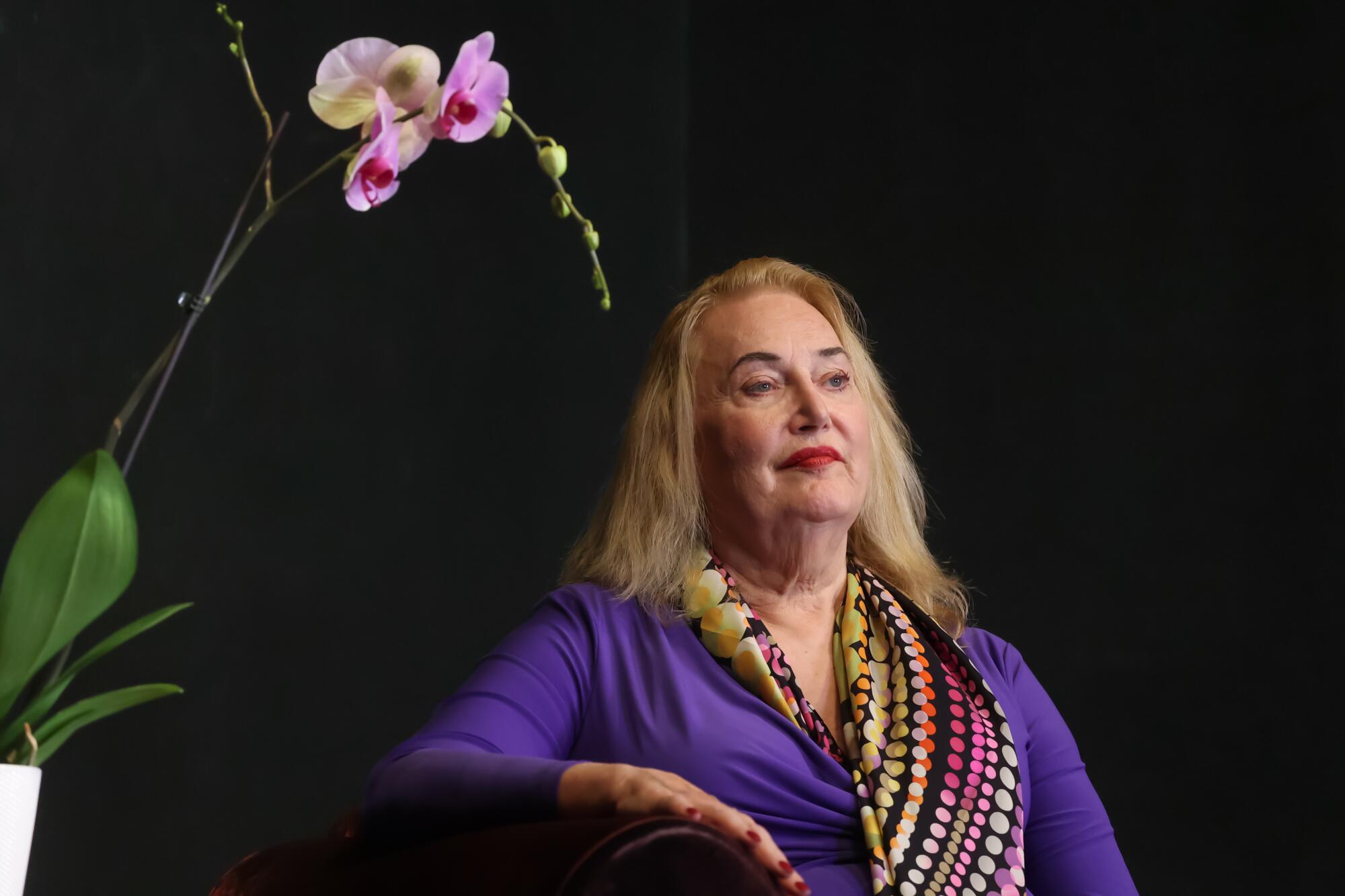
“Being trans or gender diverse is not a mental illness, and compulsory psychotherapy is not the standard of care in the gender-affirming medical model,” said Dr. AJ Eckert, medical director of the Gender and Life-Affirming Medicine Program at the Anchor Health Initiative in Stamford, Conn., and the state’s first out nonbinary trans doctor.
“Forcing transgender and gender diverse youth through extensive assessments while their cis peers are affirmed in their identity without question conveys to [them] that they are not ‘normal,’ ” they said.
Eckert also dismissed the idea that peer pressure is driving some teens to identify as trans: “Is it trendy to be one of the most marginalized and vulnerable groups?”
In Eckert’s program, a patient learns about treatment options during a one-hour intake interview. Therapy is not required.
For Anderson, a member of the American Psychological Assn. committee that is writing guidelines for transgender healthcare, providers who pursue medical treatment for children without rigorous evaluation risk committing malpractice. She said clinicians should not dismiss cases like that of Keira Bell, who sued Britain’s only youth gender clinic, claiming that after “a series of superficial conversations” with social workers she was prescribed puberty blockers at 16 and underwent a mastectomy at 20 — only to regret the decision and later resume life as a woman.
“Giving over to hormones on demand will result in many more cases of poor outcomes and many more disappointed kids and parents who somehow came to believe that giving kids hormones would cure their other psychological problems,” Anderson said. “It won’t.”
::
Anderson’s website promises to “help you become your authentic self” and her Twitter bio proclaims “Working for a radically inclusive world for _all_ transgender people.”
Some cases, she says, are relatively straightforward. After a year of weekly conversations with Liz, a 15-year-old who had no mental health issues and had long questioned her gender before she came out as a girl, Anderson wrote a letter of support this year for a puberty blocker implant and estrogen patches.
Many cases are more complicated. Take Cody, a 16-year-old with tousled pink hair and a high, lilting voice, who identifies as trans male.
He and his parents allowed The Times to observe a recent Zoom session with Anderson, their second one-on-one meeting. She began by asking him what words he used to describe his gender.
“That’s hard,” he said. “The way I describe it is vaguely abstract … I’m a guy, but slightly to the left.”
“OK,” Anderson said. “Well, orient us. Right and left — what’s that?”
“Oh, to the left just means slightly not,” Cody said. “If you take, like, a normal guy? And then just kind of take away a little bit of the guy part, but you don’t go anywhere.”
Cody has ADHD and expressed suicidal thoughts during the pandemic. His parents came to Anderson at the end of last year after he said he wanted to go on hormones. They weren’t ready to agree to any irreversible physical changes until he spent more time exploring his gender identity.
After his first session with Anderson, he complained to his mom that he felt interrogated.
But Anderson starts from the premise that questions are the key to understanding.
In her view, gender-affirming care is not accepting everything a teen says at face value, but engaging with the patient in an empathetic, open-minded way. She thinks of it as something of a detective game — listening to the kids and parents and piecing together the history.
So Anderson kept on asking questions.
What did Cody mean, she asked, when he referred to his gender as abstract?
“Not one or the other,” he said. “But also in, like, multiple other dimensions.”
“A lot of the people I’m friends with experience gender more as like a specific vibe rather than a physical category,” he went on. “One friend says that their gender is the same vibe as a raccoon. They’re not saying that their gender is a raccoon. They’re saying that their gender has the same, like, chaotic, dumpster vibes as raccoons.”
“Dumpster?” Anderson asked. “What would the human version of that be like?”
“There isn’t one; it’s just the same chaotic energy that their gender has,” Cody said. “Which is why it’s, like, very hard to explain. It’s just kind of like a dialect — a way to talk about gender that just kind of builds up within groups.”
Anderson does not presume to understand how everyone who identifies as transgender thinks. While she embraces a somewhat conventional female identity — sleek blond hair, manicured red nails, a glittery pink iPhone — many teens cultivate more esoteric ideas of gender.
Some feel uncomfortable as girls but do not identify with cisgender men. Many opt for androgynous looks: baggy pants, hoodies, short hair. Sometimes they want top surgery but are not interested in hormones. Or they want just enough testosterone to lower their voice but not enough to grow body hair. Some, she believes, construct gender identities so idiosyncratic that they struggle to develop shared meaning.
After asking Cody more about his history of gender distress, his chats with his parents and what might ease his discomfort, she arranged to meet him the following week.
It would likely take months of exploration or longer to decide whether Cody was ready for hormone therapy.
::
In an era when almost any comment about medical treatment for trans kids can lead to accusations of child abuse or transphobia, many clinicians are wary of speaking to the media.
Not Anderson. Six years ago, she came out as trans to 2 million people on a popular Swedish reality TV show and was shocked to find not just acceptance but invitations to discuss transgender healthcare with politicians and reporters. She decided that talking to the media was a vital way of raising understanding.
In October, as her two-year tenure as president of the U.S. arm of WPATH was nearing its end, Anderson granted an interview to Abigail Shrier, author of the contentious 2020 book “Irreversible Damage: The Transgender Craze Seducing Our Daughters.” Anderson told her that too many clinicians were rushing teens into medicalization and that “sloppy healthcare work” would result in “more young adults who will regret having gone through this process.”
She was not the only leading trans healthcare figure to publicly express such concerns. Dr. Marci Bowers, a vaginoplasty specialist from Burlingame, Calif., who had just been elected president of WPATH, told Shrier that she worried about the risks of puberty blockers for children in the early stages of puberty and suggested that some of her peers wanted to stifle dissenting views “to keep out anyone who doesn’t absolutely buy the party line that everything should be affirming.”
The story, published on Substack, ricocheted across social media. Many clinicians were shocked that Anderson and Bowers spoke to Shrier, a former Wall Street Journal columnist who is viewed by activists as anti-trans.
WPATH and its American branch, USPATH, soon released a statement saying they welcomed scientific discussion among experts on medical treatment for transgender youth, but that they “oppose the use of the lay press, either impartial or of any political slant or viewpoint, as a forum for the scientific debate of these issues, or the politicization of these issues in any way.”
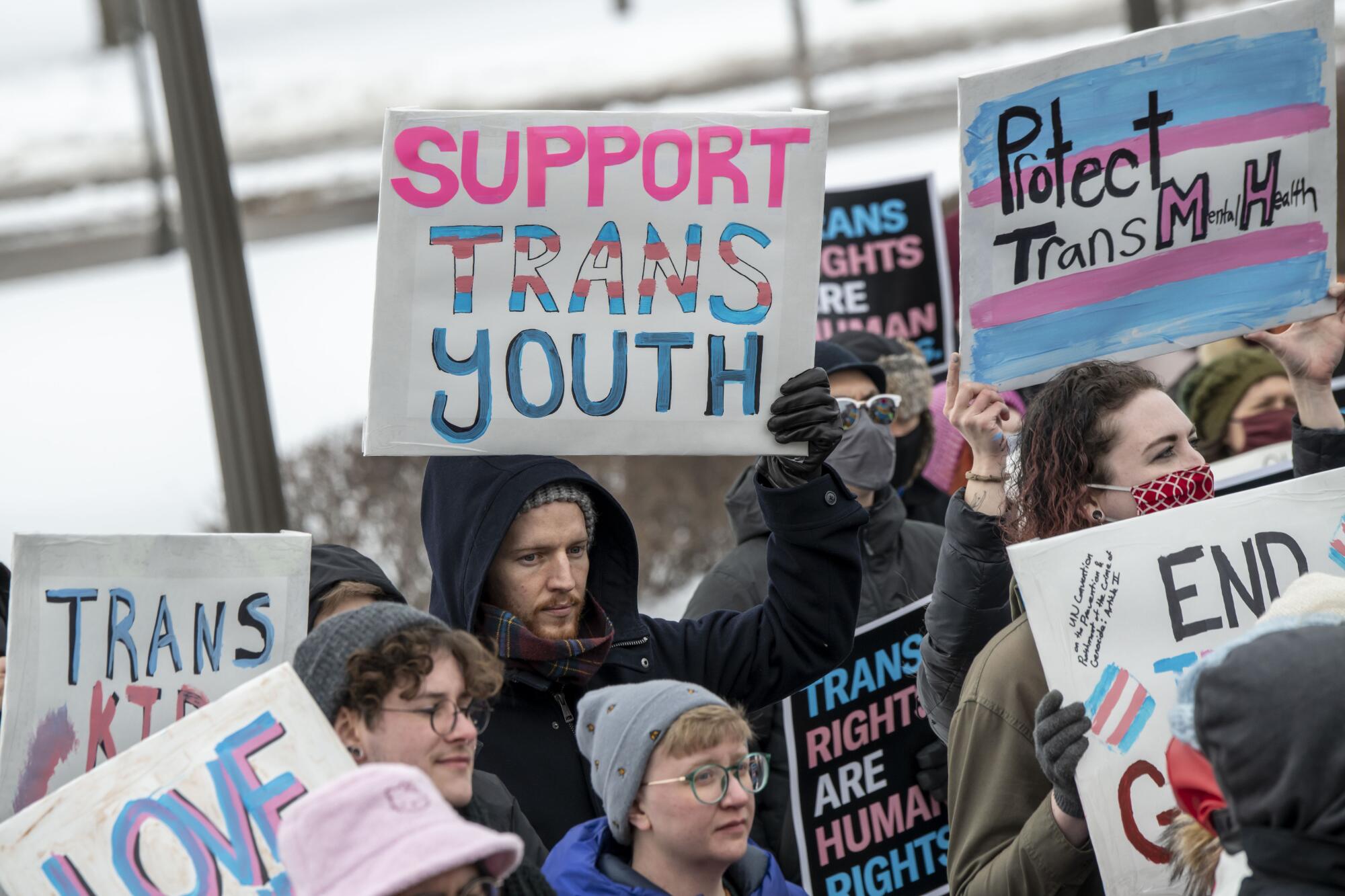
The USPATH board established a 30-day moratorium on speaking to the news media — a move Anderson interpreted as a “not very thinly veiled effort” to silence her.
“I’ve made the case for a more open posture to the press and the public,” she said in a letter announcing her resignation from the board. “We need to engage them in supporting our work and the standards of care.”
In an interview, Dr. Madeline Deutsch, the new president of USPATH, dismissed Anderson’s concerns as a “tempest in a teapot.”
“Most experts in this area agree there has to be some kind of assessment,” said Deutsch, who is also transgender. “We just need to sort out what that is.”
Anderson did not raise her concerns at board meetings before she spoke to the media. If she had, Deutsch said, “it is something that the board would absolutely have taken seriously,” noting that it had since set up a task force to look at youth assessment.
Anderson said the USPATH board was “not equipped” to deal with the issue, because the only other member who specialized in youth was Dr. Johanna Olson-Kennedy, a pediatrician at Children’s Hospital in Los Angeles who has voiced skepticism of psychological assessments for youth.
For Deutsch, debating the potential risks of medical treatment in the media risked weaponization by conservatives.
“The truth is that the overwhelming majority of kids who present for hormone therapy and start hormone therapy stay on hormone therapy, and it improves their lives,” Deutsch said. “We need to stop throwing out the baby with the bathwater.”
::
Over the last few months, some European countries have reversed course and urged more caution.
In February, health authorities in Sweden, a pioneer in trans healthcare, said that “uncertain science,” rising numbers of people who regret transitioning and potential side effects prompted the nation to restrict using hormone treatments for most people under 18.
France’s National Academy of Medicine also advised caution in the use of blockers or hormones for youth, citing potential side effects. “The risk of over-diagnosis is real, as evidenced by the growing number of young adults wishing to ‘detransition,’ ” the academy said.
No matter how closely Anderson follows the guidelines for trans care, she worries she could make the wrong call.
Every time she logs on to meet a client, she thinks of all the harms she could inflict — by inaction, by not being supportive enough, by rushing someone through the process.
Some activists have accused her of pretending to be an ally while justifying bigotry that restricts access to medical services.
“You are killing children with your hate,” one anonymous critic wrote on Twitter.
Last fall, Anderson left UC San Francisco to focus on her private practice. Since then she has written numerous op-eds and given various interviews. She has organized transgender women’s luxury retreats in the Mexican Riviera and online seminars for parents of transgender kids. But she is also angling for a new career as a television host — filming a pilot for a show in which she hopes to educate the public about diverse identities and bring “some kind of sanity to a highly polarized environment.”
More than a decade after Anderson transitioned, she is not in touch with her ex-wife, but she has a happy relationship with both her adult children. After dating men and women, she has a girlfriend. She feels more accepted as a trans woman now than she ever imagined possible.
But she sometimes wonders whether she should quit working with trans youth.
“I have these private thoughts: ‘This has gone too far. It’s going to get worse. I don’t want any part of it,’ ” she said. “I worry that people will accuse me of setting the train in motion, as part of those who advocated the affirmative approach to gender in youth, even though that’s not a reasonable account of what happened.”
For now, Anderson continues to raise questions in her practice and in the media.
In doing so, she follows the advice she gives teens whose friends tell them “Don’t doubt it. You’re trans.”
“I have a dictum: When in doubt, doubt,” she said. “Questioning is a good thing. How are you going to find out if you are lockstep with whatever conclusion you come to first?”
More to Read
Sign up for Essential California
The most important California stories and recommendations in your inbox every morning.
You may occasionally receive promotional content from the Los Angeles Times.











